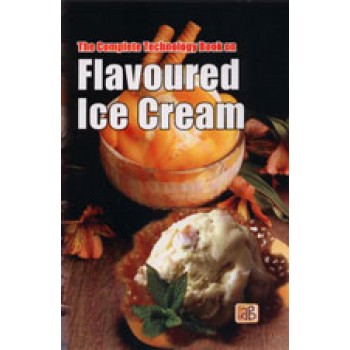The Complete Technology Book on Flavoured Ice Cream
| Price: | Rs.975.00 |
Detail Of The Complete Technology Book on Flavoured Ice Cream
| ISBN | 817833013X |
| Pages | 448 |
| Language: | English |
| Product Code: | 1 |
| Size(in cm): | 21*13.5 cm |
| Weight(in grams): | 500(approx) |
Description:
Ice Cream is a favourite food of millions around the world. It is a frozen mixture of a combination of component of milk, sweeteners, stabilizers, emulsifiers and flavours. Ice cream is a palatable, nutritious and relatively inexpensive food. No other food enjoys so much popularity and has as attractive a form and appeal as ice cream. Ice cream is composed of the mixture of food materials, such as milk products, sweetening materials, stabilizers, emulsifiers, flavours or egg products which are referred to as ingredients. Milk fat is of major importance in ice cream. It contributes rich flavor to the ice cream, is a good carrier for added flavor compounds and promotes desirable tactual qualities. Stabilizers are used to prevent the formation of objectionable large ice crystals in ice cream. Emulsifiers are used to produce ice cream with smoother body and texture, to impart dryness and to improve whipping ability of the mix. Flavour is considered the most important characteristics of ice cream. It has two characteristics; type and intensity. Classification of ice cream may be based on commercial terms commonly agreed upon or on regulatory composition requirements or flavor labeling standards. Commercially ice cream is classified as plain ice cream, chocolate, fruit, nut, frozen custard, confection, bisque, puddings, mousse, variegated ice cream, Neapolitan, ice milk, lacto, novelties, frappe etc. The basic step of production in manufacturing ice cream are composing the mix, pasteurization, homogenization, cooling, ageing, flavouring, freezing, packaging, hardening, storage, loading out products and cleaning of equipments. Ice cream can be mass produced and thus is widely available in developed parts of the world. Ice cream can be purchased in large cartons from supermarkets and grocery stores, in smaller quantities from ice cream shops, convenience stores, and milk bars, and in individual servings from small carts or vans at public events. Ice cream is expected to continue to expand robustly in India as purchasing power increases and as manufacturers invest in expanding the availability of ice cream in small stores.
Some of the fundamentals of the book are composition of ice cream mixes, the role of the constituents, diet science and classification of ice cream, caloric content of ice cream and related products, milk fat content of ice cream, classification of ice cream and related products, artificially sweetened frozen dairy foods, ingredients of ice cream roles and properties, effect of sweetener on freezing point, influence on ice crystal size and texture, flavour and colour materials and preparation, ice cream mixer preparation processing and mix calculations, the freezing process, the freezing point of ice cream mixes, ice cream handling, cleaning and sanitation, varieties, novelties and specials etc.
It is a comprehensive book which covers all the aspects of manufacturing of ice cream in various flavours. The book is meant for entrepreneurs, technocrats, professionals, researchers, dairy technologists etc.
Reviews (0)
Write a review
Your Name:Your Review:
Note: HTML is not translated!
Rating: Bad Good
Enter the code in the box below:



 |
| 